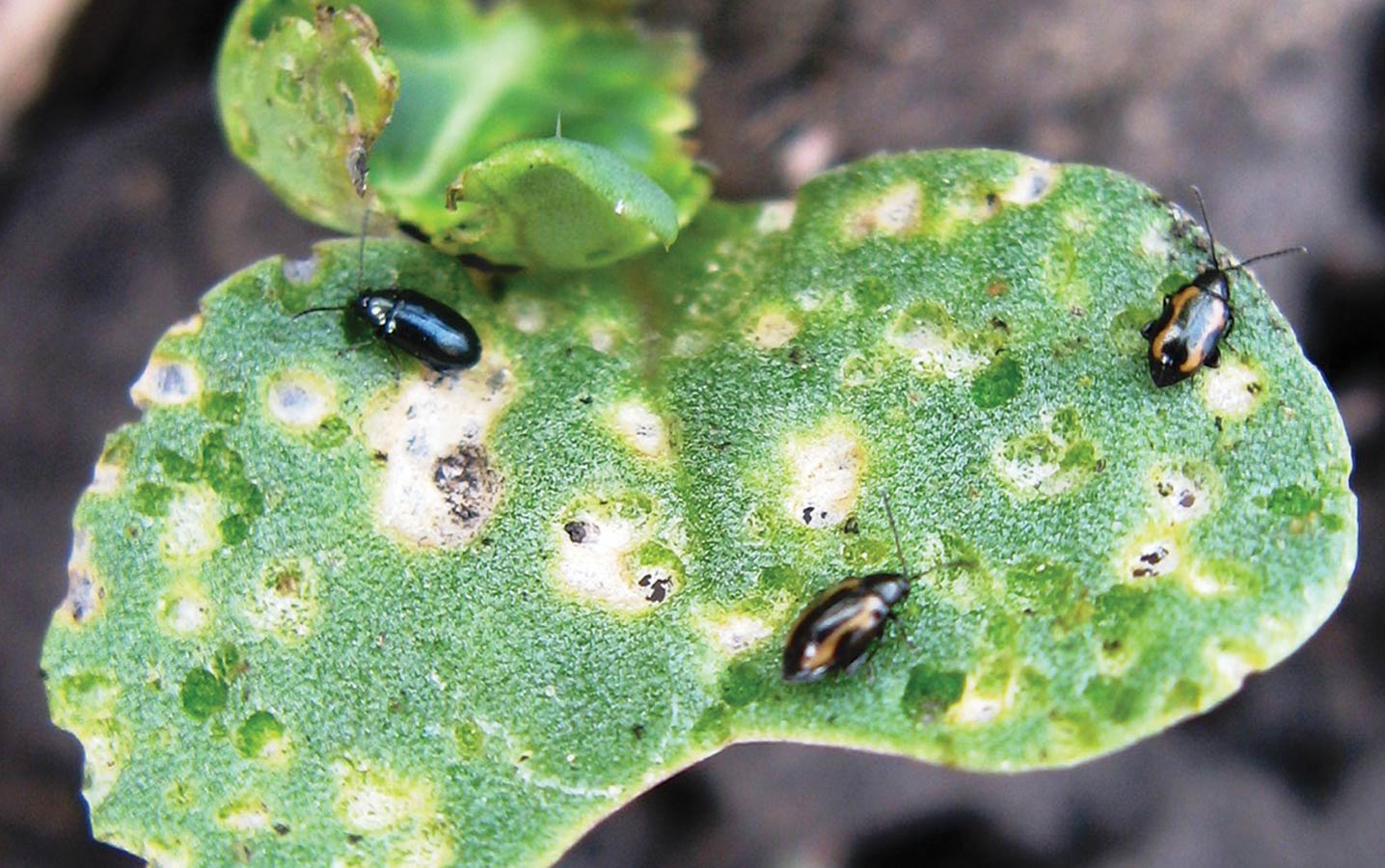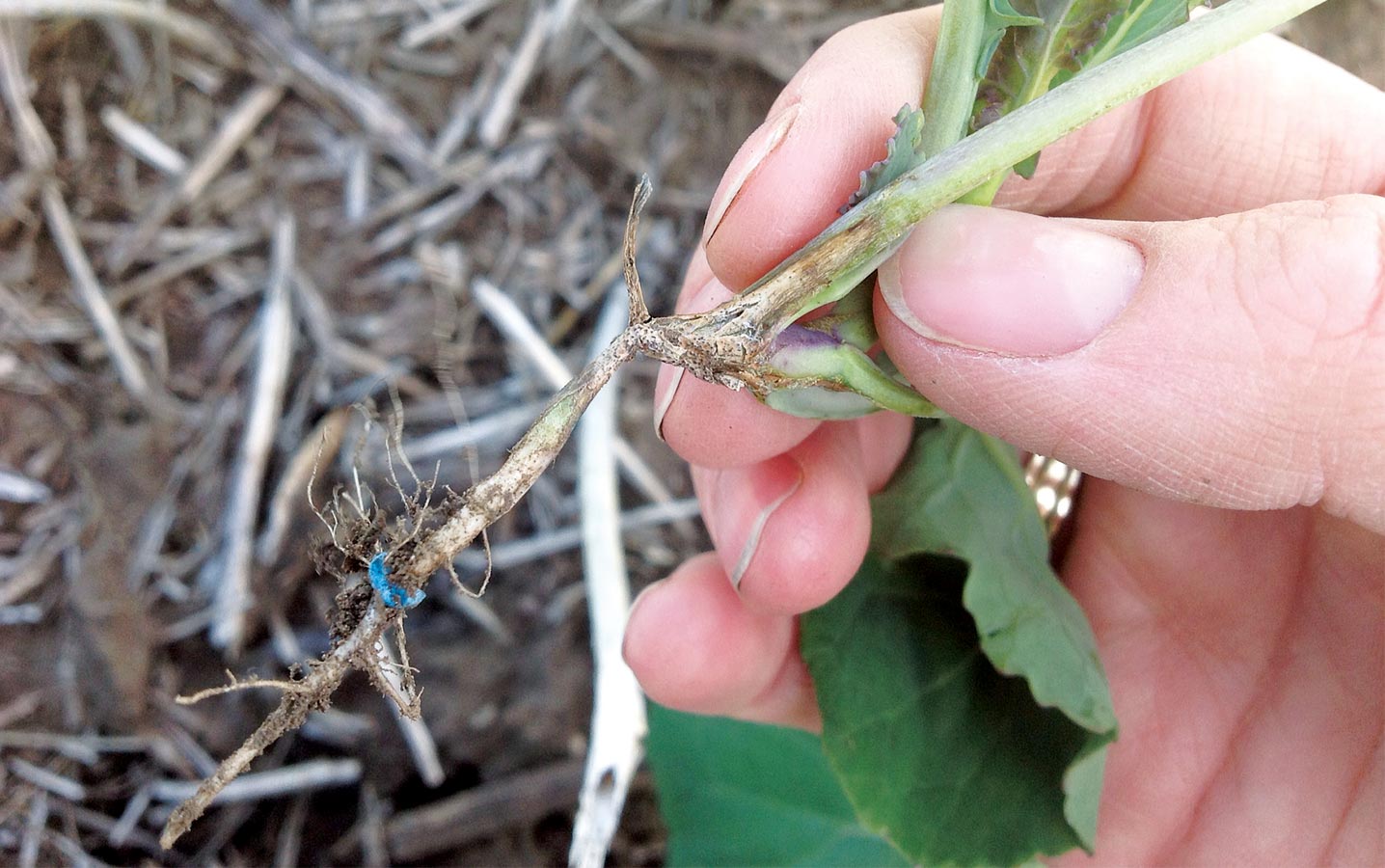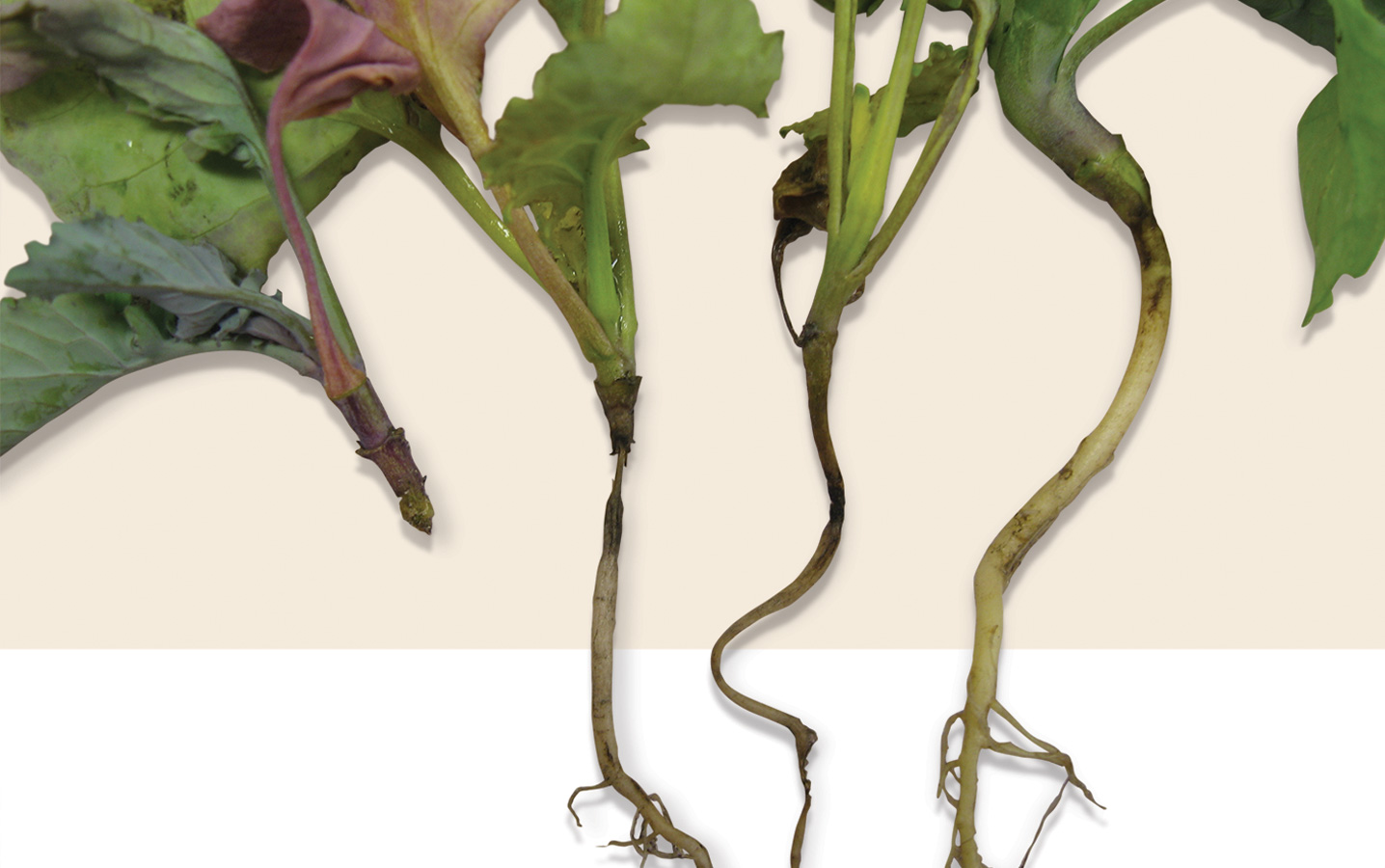
Key practice: Consider early application of fungicide for blackleg management only when disease risk is high due to short crop rotations, erosion of cultivar resistance, or hail damage. Project title, Lead researcher: “Mitigating the risk of blackleg disease of canola using fungicide strategies,” 2011-15, Gary Peng, Agriculture and Agri-Food Canada (AAFC); Dilantha Fernando, University of...
Read More 
Key practice: Crucifer and striped flea beetles react differently to their environment and to seed treatments. It is important to monitor emerging canola seedlings to know what you’re up against. Project title, Lead researcher: “Potential flea beetles species composition shift in Prairie canola,” 2007-12, Juliana Soroka, Agriculture and Agri-Food Canada (AAFC) Saskatoon Grower organization funder:...
Read More 
Key practice: Diversity of cultivar resistance, crop rotation and fungicide usage can prevent both infection and breakdown of blackleg resistance. Project title, Lead researcher: “Blackleg Resistance Stewardship: Improving our management of host resistance,” 2010-14, Dilantha Fernando, University of Manitoba Grower organization funder: ACPC, MCGA, SaskCanola Leptosphaeria maculans, the fungal pathogen that causes blackleg in canola,...
Read More Key practice: This study found that most hybrids could be straight combined successfully with minimal harvest losses when harvested in a timely manner under reasonably average environmental conditions. When making a seed decision, balance pod shatter resistance with other selection factors including yield potential, herbicide system, days to maturity and other agronomic factors. Project title,...
Read More 
Key practice: Following a diverse rotation reduces soil pathogen populations and disease pressure. However, crop rotation should only be one part of your integrated approach to disease management. Project title, Lead researcher: “Effect of crop rotation on canola seedling blight and soil pathogen population dynamics,” 2006-07, Sheau-Fang Hwang, Alberta Agriculture and Forestry Grower organization funder:...
Read More







